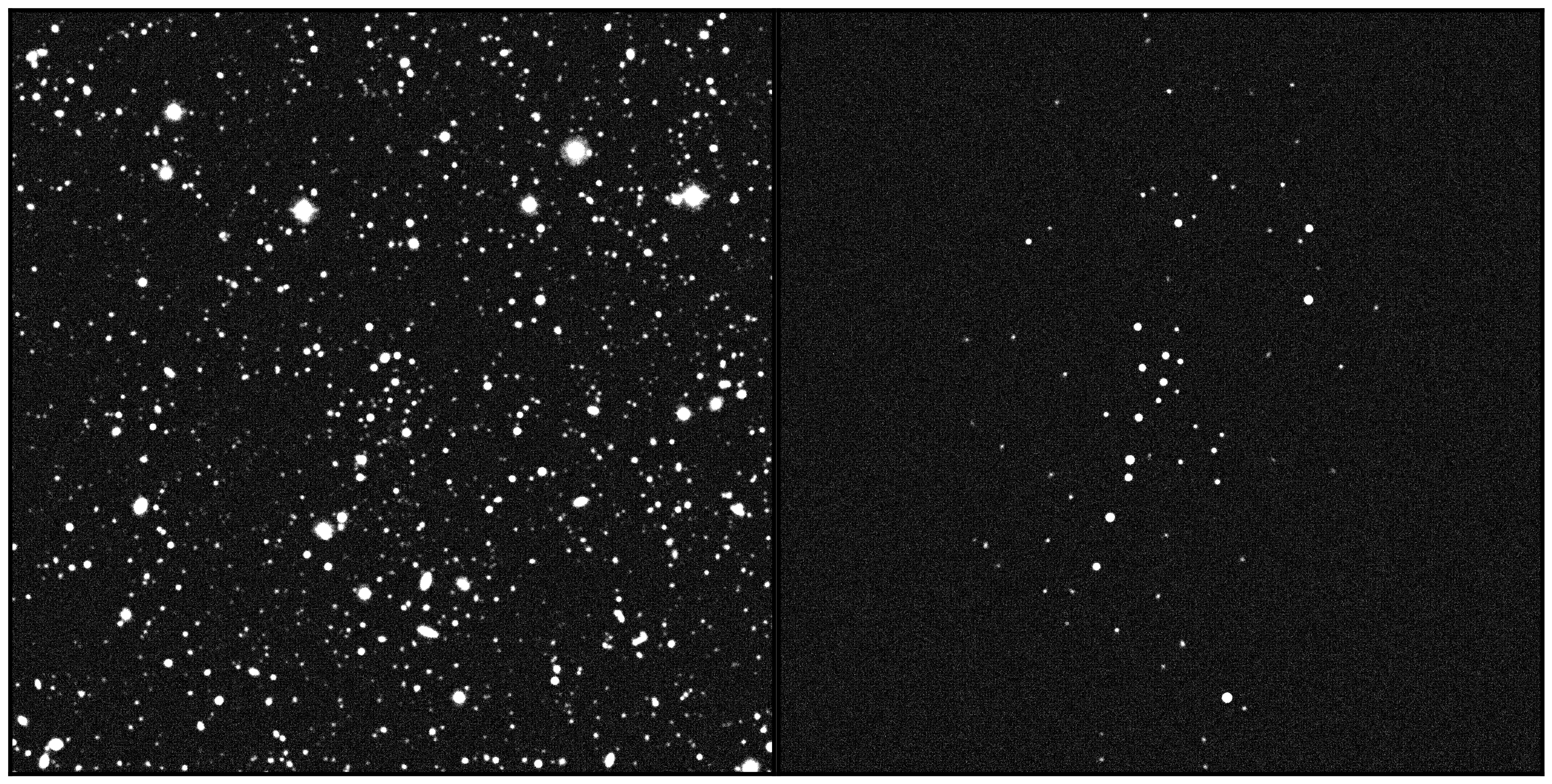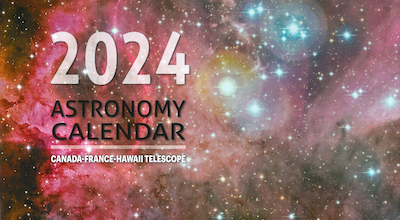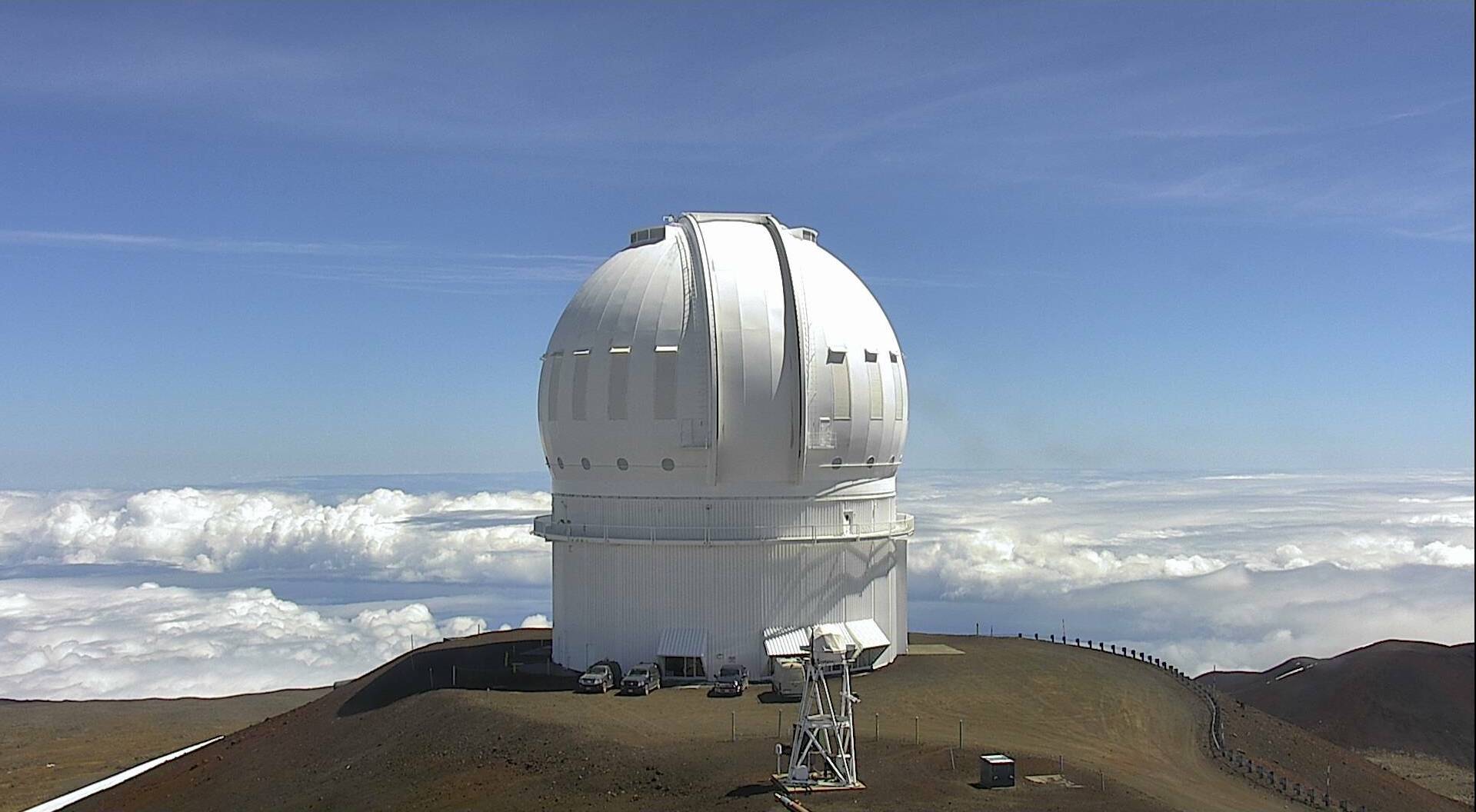A PRISTINE Star
An international team of researchers using Megacam at the Canada-France-Hawaii Telescope discovered a star that is among the least polluted by heavy elements. Such stars are extremely rare survivors of the early ages of the universe, when the gas stars are formed from hadn't yet been contaminated by the remnants of successive generations of dead stars. This new discovery opens a window onto star formation at the beginning of our universe.
For the study of the early universe, astronomers have different methods at their disposal. One is to look far into the Universe and back in time, to see the first stars and galaxies growing. Another option is to examine the oldest surviving stars of our home galaxy, the Milky Way, for information from the early universe. The "Pristine" survey, led by Nicolas Martin (CNRS/INSU, University of Strasbourg) and Else Starkenburg (Leibniz Institute for Astrophysics, Potsdam) is looking for exactly these pristine stars.
The early universe contained almost exclusively hydrogen and helium. Throughout the life of any star, the thermonuclear reactions takes place at their core create elements heavier than helium (carbon, oxygen, calcium, iron, etc.) from the hydrogen and helium making up the vast majority of their gas. When these stars explode at the end of their lifetime, they enrich the surrounding gas of with these “heavy” elements. This newly enriched gas serves as the birthplace for the next generation of stars. Each subsequent generation becomes more and more enriched with heavy elements created by their ancestors. Our sun, for example, is made up of about 2% of these heavy elements. On the contrary, very old stars contain very small quantities of heavy elements. They are however extremely rare and extremely difficult to find in our cosmic neighborhood.
The discovery of the star unveiled by the "Pristine" team was made possible thanks to a new mapping of the night sky conducted at the Canada-France-Hawaii Telescope, located in Hawaii. The Pristine team uses Megacam at CFHT to observea small part of the ultra-violet light that is very sensitive to the abundance in heavy elements and enables a discrimination of the rare, pristine stars from the much more common stars polluted in heavy elements. The team estimates that less than one star in a million is as pristine as the newly discovered star. Follow up observations with spectrographs of the Isaac Newton Group, located in Spain, and the European Southern Observatory, located in Chile, confirmed that star Pristine_221.8781+9.7844 is almost void of heavy elements, with the concentration of heavy elements being 10,000 to 100,000 times lower than those found in the atmosphere of our sun.
This star, whose discovery is presented in a publication of the Monthly Notices of the Royal Astronomical Society, Oxford University Press, brings strongly needed constraints on star formation models of the very first stars and opens a window onto an epoch that is still poorly understood. The discovery of Pristine_221.8781+9.7844 at the start of the "Pristine" project bodes well for the discovery of many such stars in the years to come.

The spectrum observed with the William Herschel Telescope on La Palma for Pristine_221.8781+9.7844, compared to the spectrum of the Sun. As can be seen, the spectrum of Pristine_221.8781+9.7844 contains far fewer feature. Only hydrogen (the large dips) and a small amount of Calcium (the small dip) can be seen in the spectrum of Pristine_221.8781+9.7844. This tells us that the star is ultra metal-poor, it has an unusual lack of heavy elements in its atmosphere, which means that it belongs to an early generation of stars formed in the Galaxy. Credits: E. Starkenburg and the Pristine collaboration.
|
Additional information
Link to the Paper
Contact Information:
Media contacts
Mary Beth Laychak, Outreach manager
Canada-France-Hawaii Telescope
mary@cfht.hawaii.edu
Science contacts
Else Starkenburg
Leibniz-Institut fur Astrophysik Potsdam
estarkenburg@aip.de
Leibniz-Institut fur Astrophysik Potsdam
estarkenburg@aip.de
Nicolas Martin
Observatoire Astrononomique de Strasbourg
nicolas.martin@astro.unistra.fr





